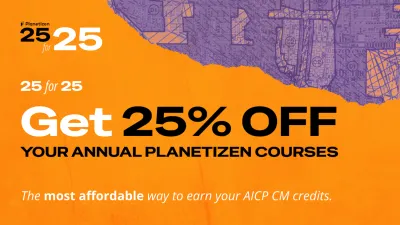NYT columnist David Brooks compares the dreams for a more compact, less car-dependent lifestyle of many urban planners with the findings of a Pew Research poll on the types of communities Americans want to live in, and they are not like Amsterdam.
"One dream many (urban planners) share is that Americans will give up their love affair with suburban sprawl and will rediscover denser, more environmentally friendly, less auto-dependent ways of living."
Brooks notes that the "economic crisis has devastated the fast-growing developments on the far suburban fringe. Americans now taste the bitter fruit of their overconsumption."
"Some (urban) writers are predicting that Americans will move back to the urban core. They will ride more bicycles, they will ride more bicycles, have smaller homes
America will, in short, finally begin to look a little more like Amsterdam."
"The Pew Research Center just finished a study about where Americans would like to live and what sort of lifestyle they would like to have.
Americans still want to move outward. City dwellers are least happy with where they live, and cities are one of the least popular places to live. Only 52 percent of urbanites rate their communities "excellent" or "very good," compared with 68 percent of suburbanites and 71 percent of the people who live in rural America.
The folks at Pew asked one other interesting question: Would you rather live in a community with a McDonald's or a Starbucks? McDonald's won."
Thanks to Allen Tacy
FULL STORY: I Dream of Denver

Maui's Vacation Rental Debate Turns Ugly
Verbal attacks, misinformation campaigns and fistfights plague a high-stakes debate to convert thousands of vacation rentals into long-term housing.

Planetizen Federal Action Tracker
A weekly monitor of how Trump’s orders and actions are impacting planners and planning in America.

In Urban Planning, AI Prompting Could be the New Design Thinking
Creativity has long been key to great urban design. What if we see AI as our new creative partner?

Massachusetts Budget Helps Close MBTA Budget Gap
The budget signed by Gov. Maura Healey includes $470 million in MBTA funding for the next fiscal year.

Milwaukee Launches Vision Zero Plan
Seven years after the city signed its Complete Streets Policy, the city is doubling down on its efforts to eliminate traffic deaths.

Portland Raises Parking Fees to Pay for Street Maintenance
The city is struggling to bridge a massive budget gap at the Bureau of Transportation, which largely depleted its reserves during the Civd-19 pandemic.
Urban Design for Planners 1: Software Tools
This six-course series explores essential urban design concepts using open source software and equips planners with the tools they need to participate fully in the urban design process.
Planning for Universal Design
Learn the tools for implementing Universal Design in planning regulations.
Gallatin County Department of Planning & Community Development
Heyer Gruel & Associates PA
JM Goldson LLC
City of Camden Redevelopment Agency
City of Astoria
Transportation Research & Education Center (TREC) at Portland State University
Jefferson Parish Government
Camden Redevelopment Agency
City of Claremont




























